Las Ventas Bullfighting Ring was built to replace the bullfighting
ring located off the Aragon highway. The newer arena was built to be larger,
given that the seating capacity of the previous one was insufficient because
of the demographic growth that Madrid experienced during the first-half of the
twentieth century. The new bullfighting ring was inaugurated on October 12, 1934. It remained open without interruption until 1936, the year in which the Spanish
Civil war began. The construction was directed by the architect Jose Espeliu, who died without seeing his work completed. The ring is partially designed, using a Mozarabic style. The walls are inlaid with ceramic depictions of the shields of all the Spanish provinces, as well as their purely ornamental motifs.
The arena is 60 meters in diameter. The bullring has a seating capacity of 23,000 spectators. At present, 80% of the seats belong to season ticket holders. The bullfighting ring also has a Horse Arena, a Towing Arena an infirmary (which can be reached directly from the bullring), a chapel and a bullfighting museum, that are open to the public. Currently, the owner of the bullfighting ring is the regional
community government of Madrid, but various private companies manage it.
The bullfighting ring is on 237 Alcala Street. The fastest and easiest way to
get there is by metro Lines 2 and 5 that stop directly at the Las Ventas station
where the bullring is located. Alternative transportation to the bullring includes
taxi or car, although going by car is not advised due to parking problems.
All the seats are numbered and at the same time grouped in the following
three main areas:
Shade
Sun and Shade
Sun
Each of these areas is divided into several sections or Tendidos. The
Shade is divided into five Tendidos: 9,10,1,2 and Preferente .The Sun and
Shade is divided into Two Tendidos: 8 and 3 and the Sun is divided into four
Tendidos: 7,6,5 and 4.
Each Tendido is divided into five seating categories: Vip category: the three first rows are: barrera (barrier), contrabarrera (frontrow) and delantera baja (second row)
1 Category: row 1 to 14
2 Category: rows 15 to 27
3 Category: gradas
4 Category: andanadas
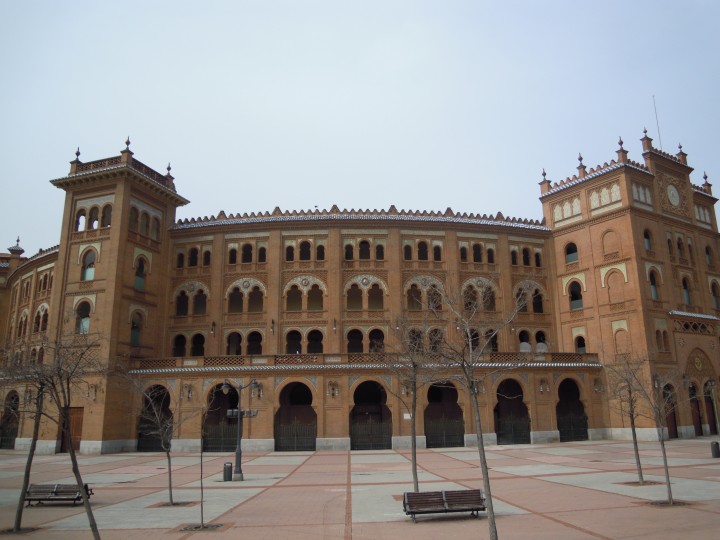
Archivo por meses: febrero 2017
March 26th Starts Season 2017 in Madrid
we are looking forward to attending the first bullfight of season 2107. Just one month left.
On March 26th 2017 Leo Valadez, Diego Carretero and Pablo Aguado will fight in Madrid against bulls from Fuente Ymbro. The public of Madrid is looking forward to seeing Leo Valadez, one of the most interesting Mexican bullfighters today
Leo Valadez was born in 1997 in Aguascalientes, Mexico. He studied at the Aguascalientes School and at the Fundación El Juli, in Arganda. Leo was the first student to get a scholarship from CITAR ( Centro Internacional de Tauromaquia y Alto rendimiento). He fighted for the first time on June 9th 2013 with Francisco Jose Espada and Cristian Climent against bulls from Antonio Lopez Gibaja.
Technically he handles very well l the Muleta with the left hand, uses aristically the cape and , sometimes , plays the roll of a Banderillero.
Leo Valadez has in the great Mexican bullfighters his great references. “I learn watching his videos, especially David Silveti and Manolo Martinez, are my two favorite bullfighters. It’s time for Mexico to have a new great bullfighter and I will fight to be him. “. He dreamed with fighting at the most importat european bull-rings, but he never forgets Mexico: “I am proud to be Mexican and having success at home will make me very happy.”
Tickets available at www.bullfightticktetsmadrid.com 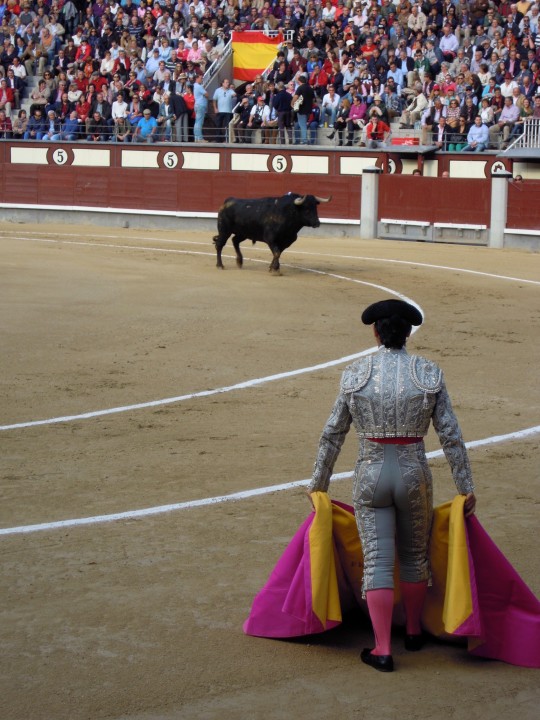
Valencia Season 2017 starts on March 10th
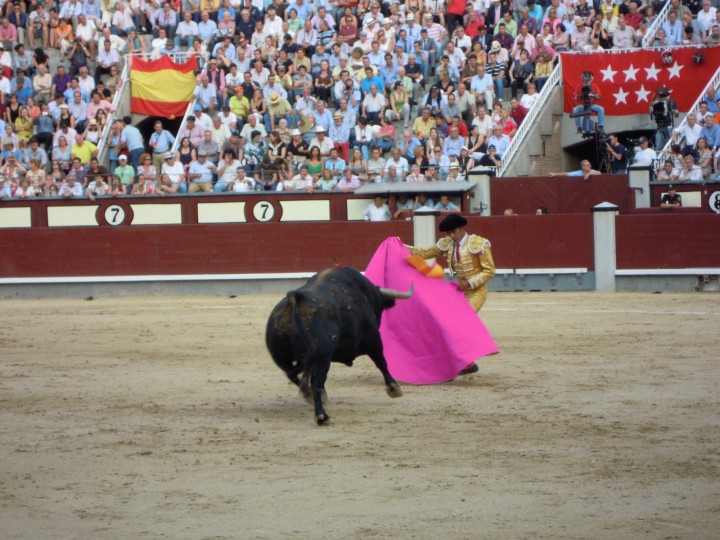 The city of Valencia is situated on the banks of the Turia, on the east coast of Spain, . Its historic centre is one of the largest in Spain and this heritage of ancient monuments, views and cultural attractions makes Valencia one of the country’s most popular tourist destinations.
The city of Valencia is situated on the banks of the Turia, on the east coast of Spain, . Its historic centre is one of the largest in Spain and this heritage of ancient monuments, views and cultural attractions makes Valencia one of the country’s most popular tourist destinations.
Valencia’s Bullring was built between 1850 and 1859, following the Neoclassical style. The bullfighting arena is situated in central Valencia ( Jativa Street number 28)
Between March 10th and May 13th the follwing bullfights are going to be held in Valencia :
Friday 10: Erales de Aida Jovani para Miguel Senent “Miguelito” (Escuela de Tauromaquia de Valencia), Ramón Serrano (Escuela de Tauromaquia de Murcia) y Álvaro Passalacqua (Escuela de Tauromaquia de Málaga).
Saturday, 11 de marzo Toros de Alcurrucén para Juan Bautista, Fortes y Álvaro Lorenzo.
Sunday12: Toros de Fuente Ymbro para Juan José Padilla, Curro Díaz y Manuel Escribano.
Monday13: Novillada picada con reses de El Parralejo para Leo Valadez, Diego Carretero y Jorge Rico.
Tuesday14: Novillada picada con reses de José Vázquez para Cristian Climent, Andy Younes y Marcos.
Wendsday15: Toros de Jandilla para David Mora, Paco Ureña y Javier Jiménez.
Thursday16: Toros de Victoriano del Río para Sebastián Castella, Miguel Ángel Perera y Román.
Friday17: Toros de Núñez del Cuvillo para El Fandi, Manzanares y Roca Rey.
Saturday18: Toros de Juan Pedro Domecq para Enrique Ponce, Cayetano y Ginés Marín.
Sunday19 matinal: Toros de Fermín Bohórquez para Diego Ventura, Manuel Manzanares y Lea Vicens.
Sunday19: Toros de Garcigrande para El Juli, Alejandro Talavante y López Simón.
Saturday13 de mayo a las 18.30 horas: Novillada con picadores con reses de Sánchez Herrero para Fernando Beltrán, Alfonso Cadaval y Carlos Ochoa.
Museo Taurino
The Bullfighting Museum was opened in 1951 and is located in Las Ventas Bullring, next to the Horses Courtyard ( Patio de caballos). The opening hours are From March to October , Monday to Sunday 10 to 18 hours, but the days on which the bullfight is held only 10 to 16 hours; From November to February Monday to Sunday , 10 to 18 hours. The visit is free.
Among the interesting things you can see we would highlight the collection of prints echted in aquatint by Francisco de Goya, wherein are represented various bullfihts “Suertes” and Passes performed at the arenas; the bronze sculpture of Juan Belmonte by Luis Sanguino; the big portrait of Manolete by Espinosa; the color prints by José Vallejo y Galeazo; the engravings by unkown autor: “La Cogida Mortal De Pepe –Illo” and “La Cogida Mortal De Antonio Romero” that represent the death of two famous bullfighters; Four color echtings by known artist about the four Suertes of Bullfighting; the heads of mythical bulls
El Museo Taurion de Madrid fue inaugurado en 1951 y está ubicado en la Plaza de Las Ventas cerca del Patio de Caballos. El horario de visita es de Marzo a Octubre, de lunes a domingo de 10 a 18 horas, pero los días en que se celebra un festejo el horario se reduce de 10 a 16 horas; de Noviembre a Febrero el horario es de lunes a domingo de 10 a 18 horas.
Entre las múltiples cosas interesantes que podemos ver en su interior, destacaría la colección de aguatintas realizadas por Francisco de Goya que representan distintas suertes del toreo realizadas en los ruedos; la escultura de bronce de Juan Belmonte, obra de Luis Sanguino; el gran retrato de Manolete por Espinosa; los grabados en color de José Vallejo y Galeazo; los aguafuertes anónimos : “La Cogida Mortal De Pepe-Illo” y “La Cogida Mortal De Antonio Romero” que representan la muerte de dos famosos toreros en el ruedo; cuatro aguafuertes en color anónimos sobre las cuatro Suertes del toreo y las cabezas disecadas de algunos toros míticos.
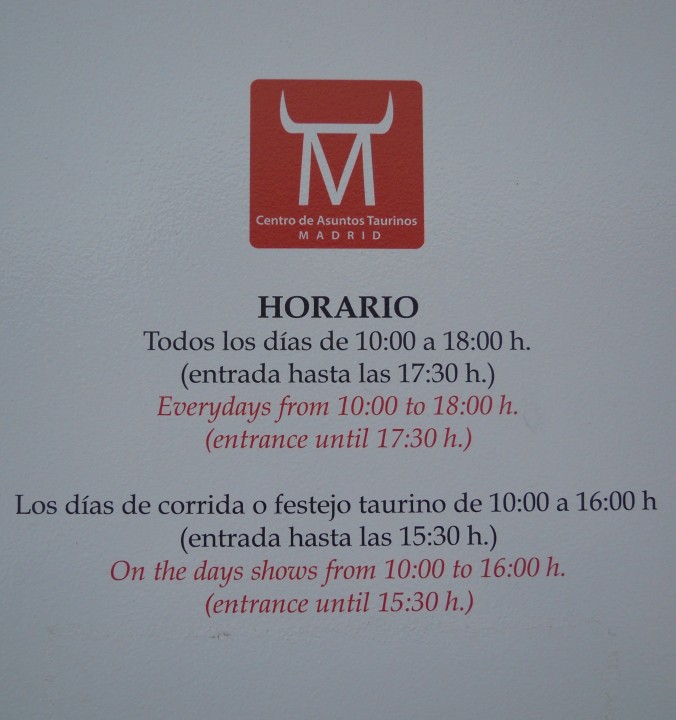
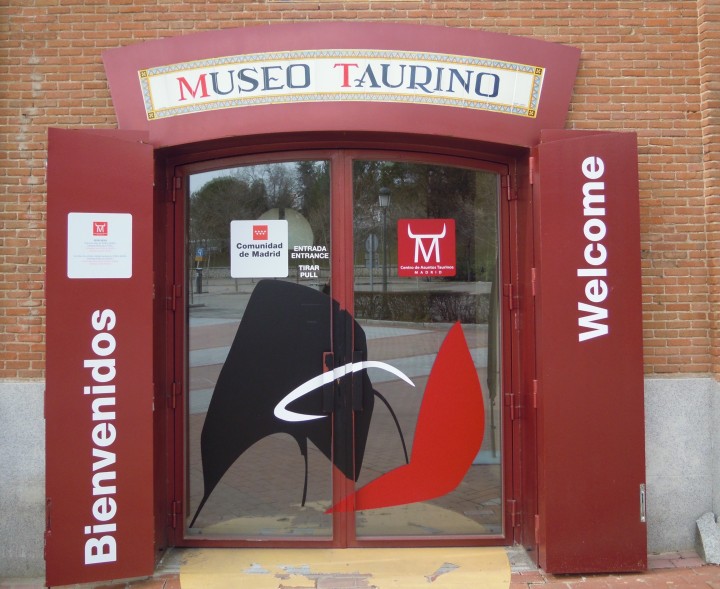
Bullfight In the XVIII Century
During the fifteenth and sixteenth centuries the bullfight consisted of the fight between a wild bull and an aristocrat on horseback armed with spears and javelins and assited by several men on foot.
At that time the bullfights were part of the celebration of important weddings or births of the aristocratic families. Carlos V fought against a bull in Valladolid in 1527 in order to celebrate his sons’ birth .
But only a series of changes that took place during the second half of the 18th century made possible the birth of the bullfight in the modern sense:
Bullfighting on foot replaces the bullfighting on horseback
The bulfighters are no longer nobelmen belonging to upper classes, but people of the town who professionalize and charge for their performance.
Fighting bulls are selected primarily for a certain combination of aggression, energy, strength
The first bullrings are built as permanent buildings destined to the celebration.
The first tauromachias are written explaining the technique and the rules of the art of bullfighting
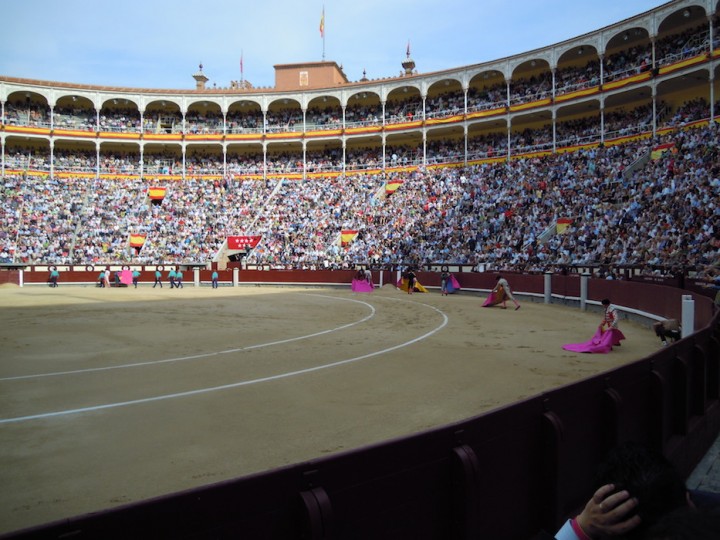
Bull-Leaping
In the Palaeolithic man killed animals to feed on their flesh and protected themselves from the cold with their skins. One of these animals was a wild ox, the Urus or Bos Primigenius, 6 foot tall and endowed with big horns. There are cave paintings of this time that represent men hunting bulls.
In the Neolithic period, men stop being nomads to settle and become farmers and ranchers. At this time rituals were already held in which bulls were sacrificed.
In the year 2000 a.c. The Cretans celebrated fertility rituals with brave bulls. Young men and young girls confronted the bull waiting for its charge, and at the last moment,, leaning on the animal’s horns, jumped over it landing on his back or on the ground. These rituals ended with the killing of the bull by breaking its neck or stabbing it . this ritual is usually named Bull-Leaping (taurokathapsia, from Greek ταυροκαθάψια) and cosists of an acrobatic leap over a bull; when the leaper grasps the bull’s horns, the bull will violently jerk his neck upwards giving the leaper the time to perform somersaults and other acrobatic tricks or stunts.
Bull-leaping is still practiced in the south west of France, where it is traditionally known as the course landaise (although usually cows are used instead of bulls. These cows are the female stock of the fighting bulls bred for the corrida in Spain. However once a year bulls are used, instead of cows, in the Festival of Art and Courage). The town of Mont-de-Marsan in Gascony is renowned for its fine sauteurs or “leapers” and écarteurs (“dodgers”) dressed in brocaded waistcoats. They compete in teams, attempting to use their wide repertoire of skillful evasions and acrobatic leaps to avoid the cow’s charges.
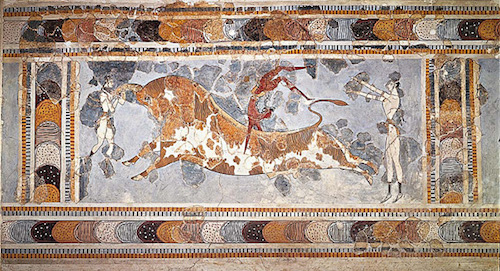
Sevilla season 2017
SUNDAY APRIL 16TH. BULLS: Núñez del Cuvillo . BULLFIGHTERSMorante de la Puebla, José María Manzanares and Roca Rey.
SUNDAY APRIL 23rd. BULLS: Fuente Ymbro . BULLFIGHTERS: Diego Urdiales, Manuel Jesús “El Cid” and Joselito Adame.
WENEDSDAY APRIL 26TH. BULLS: Torrestrella . BULLFIGHTERS: José Garrido, Álvaro Lorenzo and Ginés Marín.
THURSDAY APRIL 27TH . BULLS: Garcigrande – D. Hernández. BULLFIGHTERS: Morante de la Puebla, Julián López “El Juli” and Alejandro Talavante.
FRIDAY APRIL 28TH. BULLS: Juan Pedro Domecq – Parladé. BULLFIGHTERS: Enrique Ponce, José María Manzanares and López Simón.
SATURDAY APRIL 29TH. BULLS: Victorino Martín BULLFIGHTERS: Antonio Ferrera, Manuel Escribano and Paco Ureña.
SUNDAY APRIL 30TH .BULLFIGHT ON HORSE BACK. BULLS: Fermín Bohórquez REJONEADORES: Sergio Galán, Diego Ventura and Lea Vicens.
MONDAY MAY 1st . BULLS: Daniel Ruiz. BULLFIGHTERS: Rivera Ordóñez “Paquirri” (last bullfight in Sevilla Bull ring), Julián López “El Juli” and Cayetano.
TUESDAY MAY 2nd. BULLS: García Jiménez – Olga Jiménez. BULLFIGHTERS:Morante de la Puebla, Miguel Ángel Perera and Javier Jiménez.
WENEDSDAY MAY 3rd. BULLS: Jandilla – Vegahermosa. BULLFIGHTERS: Juan José Padilla, David Fandila “El Fandi”and Manuel Escribano.
THURSDAY MAY 4TH. BULLS: Núñez del Cuvillo . BULLFIGHTERS: Morante de la Puebla, Alejandro Talavante and David Mora.
FRIDAY MAY 5TH. BULLS: Victoriano del Río –Cortés. BULLFIGHTERS: Sebastián Castella, José María Manzanares and Roca Rey.
SATURDAY MAY 6TH. BULLS: El Pilar-Moisés Fraile . BULLFIGHTERS:Juan José Padilla, Antonio Ferrera and López Simón.
SUNDAY MAY 7TH. BULLS: Miura . BULLFIGHTERS: Antonio Nazaré, Pepe Moral and Esaú Fernández.
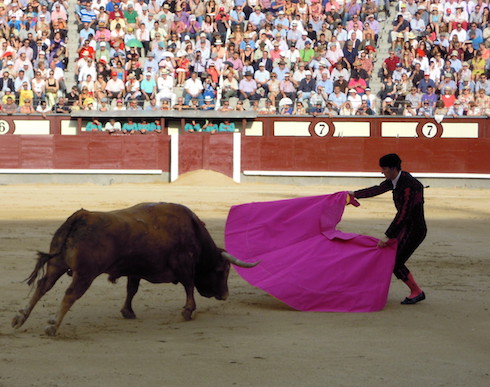
The Art Of Bullfighting
The bullfight is neither a fight nor a competition between a man and an animal.
A fight between a 70kg weigh man and a 600 kg bull makes no sense. The animal is physically far superior to a man. But neither is the bullfight a sport in which two opponents compete for victory, like a football game. Defenders of bullfight consider it tan art. The bullfight is an eminently artistic show structured in three acts (Suertes) in which the bullfighter, facing a real danger, using his thecnical skills and following rules established by tradition will end up killing the bull.
Being the bull a living being it is very difficult to use it for artistic purposes. It is a dangerous and unpredicable adversary. The bullfight will have to be brave to face the danger, but also reasonable and know well the art of bullfighting.
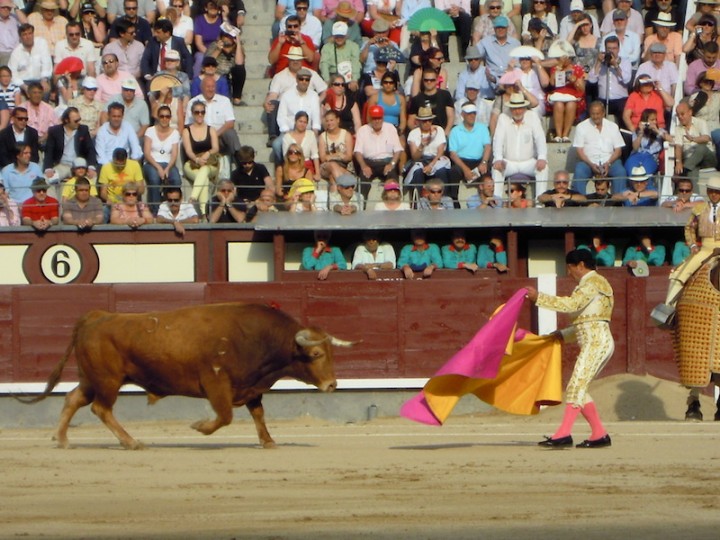
Fallas 2017: Bullfights in Valencia
The city of Valencia is situated on the banks of the Turia, on the east coast of Spain, . Its historic centre is one of the largest in Spain and this heritage of ancient monuments, views and cultural attractions makes Valencia one of the country’s most popular tourist destinations.
Valencia’s Bullring was built between 1850 and 1859, following the Neoclassical style. The bullfighting arena is situated in central Valencia ( Jativa Street number 28)
Between March 10th and May 13th the follwing bullfights are going to be held in Valencia :
Friday 10: Erales de Aida Jovani para Miguel Senent “Miguelito” (Escuela de Tauromaquia de Valencia), Ramón Serrano (Escuela de Tauromaquia de Murcia) y Álvaro Passalacqua (Escuela de Tauromaquia de Málaga).
Saturday, 11 de marzo Toros de Alcurrucén para Juan Bautista, Fortes y Álvaro Lorenzo.
Sunday12: Toros de Fuente Ymbro para Juan José Padilla, Curro Díaz y Manuel Escribano.
Monday13: Novillada picada con reses de El Parralejo para Leo Valadez, Diego Carretero y Jorge Rico.
Tuesday14: Novillada picada con reses de José Vázquez para Cristian Climent, Andy Younes y Marcos.
Wendsday15: Toros de Jandilla para David Mora, Paco Ureña y Javier Jiménez.
Thursday16: Toros de Victoriano del Río para Sebastián Castella, Miguel Ángel Perera y Román.
Friday17: Toros de Núñez del Cuvillo para El Fandi, Manzanares y Roca Rey.
Saturday18: Toros de Juan Pedro Domecq para Enrique Ponce, Cayetano y Ginés Marín.
Sunday19 matinal: Toros de Fermín Bohórquez para Diego Ventura, Manuel Manzanares y Lea Vicens.
Sunday19: Toros de Garcigrande para El Juli, Alejandro Talavante y López Simón.
Saturday13 de mayo a las 18.30 horas: Novillada con picadores con reses de Sánchez Herrero para Fernando Beltrán, Alfonso Cadaval y Carlos Ochoa.

Leo Valadez in Iscar
 Leo Valadez has been awarded with one ear and two ears in Iscar ( Valladolid ) today 19th February 2017. On March 26th 2017 Leo Valadez, Diego Carretero and Pablo Aguado will fight in Madrid against bulls from Fuente Ymbro. Te public of Madrid is looking forward to seeing Leo Valadez, one of the most interesting Mexican bullfighters today
Leo Valadez has been awarded with one ear and two ears in Iscar ( Valladolid ) today 19th February 2017. On March 26th 2017 Leo Valadez, Diego Carretero and Pablo Aguado will fight in Madrid against bulls from Fuente Ymbro. Te public of Madrid is looking forward to seeing Leo Valadez, one of the most interesting Mexican bullfighters today
Leo Valadez was born in 1997 in Aguascalientes, Mexico. He studied at the Aguascalientes School and at the Fundación El Juli, in Arganda. Leo was the first student to get a scholarship from CITAR ( Centro Internacional de Tauromaquia y Alto rendimiento). He fighted for the first time on June 9th 2013 with Francisco Jose Espada and Cristian Climent against bulls from Antonio Lopez Gibaja.
Technically he handles very well l the Muleta with the left hand, uses aristically the cape and , sometimes , plays the roll of a Banderillero.
Leo Valadez has in the great Mexican bullfighters his great references. “I learn watching his videos, especially David Silveti and Manolo Martinez, are my two favorite bullfighters. It’s time for Mexico to have a new great bullfighter and I will fight to be him. “. He dreamed with fighting at the most importat european bull-rings, but he never forgets Mexico: “I am proud to be Mexican and having success at home will make me very happy.”
